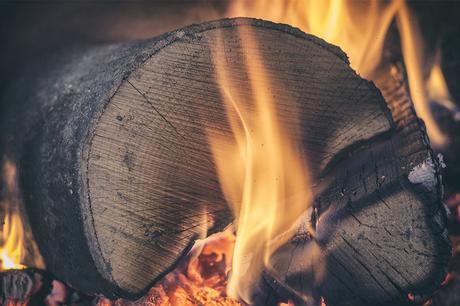
With UK winters becoming ever-more inclement, and the unstoppable upward march of electricity and gas prices, it's no surprise that people are looking for cheaper ways to take the chill off the winter.
The popularity of wood and pellet burning stoves is on the rise, however, for many people, the supply of firewood can be problematic. With people burning through 5-20 cords in a single winter season (what is a 'cord' you ask? We'll get to that), the average person knows precious little about the various different types of firewood, moisture content, the differences between hardwood and softwood, creosote levels, and good value-for-money.
It can be easy to be deceived by a man with a van, a beard, a chainsaw and a huge pile of wood, so it's important to follow a few simple guidelines to ensure you're getting good, safe and efficient wood from a legitimate firewood dealer.
The simplest way to avoid dealing with unscrupulous "firewood merchants" is to simply ask for a particular type of wood. A legitimate firewood seller will be intimately familiar with the different types of wood, where a fake one will most likely have little knowledge of them.
Generally, the longest and cleanest burning woods are hardwoods such as oak, maple and cherry. These burn with minimal smoke, and provide fuel for longer than softwoods. All firewood should be seasoned for around six to eight months; this will reduce the moisture content to around 20%, providing a clean and easy (ideally smoke-free) burn.
You will likely pay extra for hardwoods, but the price tag is often worth it. Softwoods tend to smoke heavily, creating high levels of creosote in the chimney, this can lead to the chimney becoming blocked and filling your living room with smoke; or worse -the build-up of creosote can catch fire and endanger the lives of you and your family, so always ensure you regularly sweep your chimney or clean out your stove. Softwoods can be identified by their (surprise, surprise) softness, and their pine-scent. Hardwoods, by contrast, tend to be greyish with small dry cracks in them.
If you buy your wood from a supermarket, a hardware store or a petrol station, allow the wood to dry out in a sunny dry spot for a while before attempting to burn it. Often, wood sold in this way is wrapped in plastic, which can trap moisture within. I usually buy my firewood online from sites such as https://www.certainlywood.co.uk, this is a good way of ensuring quality and avoiding scams.
https://www.certainlywood.co.uk can deliver wood to your door. If you're prepared to haul your own wood, you may save a bit of money on handling and delivery; however, this can be a false economy if you do not have the resources (such as a large, torquey vehicle) with which to haul your own wood.
When buying wood from a dealer, it's important to make sure that your wood is cut to burning length (the approximate length of your fireplace, a sensible suggestion unless you're handy with an axe). The wood should be split and stacked carefully, not haphazardly scattered in a pile. A well-stacked pile will minimise airspace, ensuring you're getting more wood for your money.
When buying a 'cord', ensure that it measures approximately 128 cubic feet (4ft high x 8ft length x 4ft depth). Avoid terms such as 'truckload', 'rank' or 'rick', as these are often the indicative signs of an illegitimate dealer.
As always, obtain a receipt from your vendor and ensure you're there when the wood is delivered; this will ensure that you can check the wood before signing for the delivery. A good vendor won't object to giving you a receipt as it will broaden their exposure. It's advisable to ask the merchant to stack the logs; this will incur an extra charge, but it will allow you to see with your own eyes, how much wood you've actually got; be wary of loose of haphazard stacking, as this is often a tell-tale sign of an unscrupulous firewood merchant.
